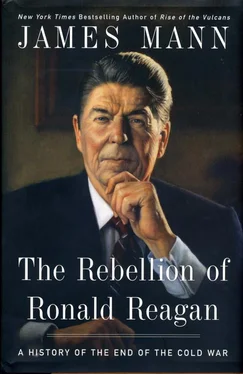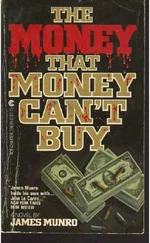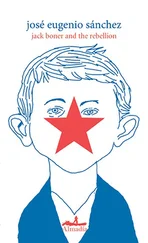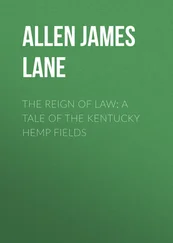That fall, two other episodes underlined for Reagan the possibility of a miscalculation that could lead to nuclear war. On September 1, 1983, a Korean Airlines plane was shot down after flying off course into Soviet territory; Soviet officials had wrongly believed it might be a military plane. Two months later, when NATO conducted an extensive military exercise called Able Archer, U.S. intelligence officials discovered that Soviet officials monitoring the allies’ activities believed that the Soviet Union was about to be attacked. Reagan recorded in his diary one day in November that the Soviets “are so defense minded, so paranoid about being attacked that without being in any way soft on them we ought to tell them no one here has any intention of doing anything like that.” 6
By late 1983, it appears, Reagan had seen, heard, and witnessed enough as president to be in favor of trying to abolish nuclear weapons. In November of that year, on a trip to Asia, he began to talk vaguely of his beliefs. “I know I speak for people everywhere when I say, our dream is to see the day when nuclear weapons will be banished from the face of this earth,” Reagan said in a speech to the Japanese Diet. At the time, those words were understandably greeted with skepticism. Within weeks, Reagan began asking his speechwriters to insert into a speech on Soviet relations another expression of his hopes for a world without nuclear weapons. At meeting after meeting, he raised the subject of abolition. “The bureaucracy would not hear of it,” Secretary of State George Shultz reported. 7
Reagan persisted. Following his 1984 reelection and throughout his second term, he made increasingly clear to the high-ranking officials around him that he would like to find a way to move toward a world without nuclear weapons. His aides argued with him, to no avail. “He periodically would say, ‘Let’s get rid of them [nuclear weapons],’” recalled Frank Carlucci, who served as national security adviser in 1986-87. “And I resurrected an old paper that [John] Poindexter [Carlucci’s predecessor] had done, saying we can’t get rid of them, and redid it and sent it back in.” Reagan wasn’t persuaded and didn’t change. At one point in 1987, Carlucci brought in Richard Perle, the staunch proponent of American military power who had been Defense Secretary Caspar Weinberger’s principal adviser for Soviet policy, to try to convince Reagan it would be wrong to abolish nuclear weapons. Perle found that Reagan “was fixed in his ways on a nuclear-free world.” 8
George Shultz told his State Department colleagues that the president had earned the right to his views. “When you win forty-eight out of fifty states, you, too, can talk about eliminating nuclear weapons,” Shultz said. 9
Reagan and Gorbachev met each other for the first time in Geneva in November 1985. The event attracted nearly three thousand correspondents from around the world to analyze every word and gesture—for good reason, since this was the first superpower summit between American and Soviet leaders in more than six years. When Reagan emerged outside coatless and hatless in the frosty weather for his first meeting with the Soviet leader, the correspondents took it as a sign of Reagan’s vitality. Years later, Reagan’s personal aide, executive assistant Jim Kuhn, admitted that Reagan had himself put on an overcoat and scarf, and that Kuhn had repeatedly urged him to take it off for appearance’s sake. “Gorbachev is much younger, and I thought, ‘Gorbachev’s going to get out of that car, no coat on, no hat on, Reagan’s going to be bundled up like [an] old feeble man,’” Kuhn recalled. After several pleas, Reagan, clearly annoyed, pulled off the overcoat and threw it at Kuhn. “All right, damn it, have it your way,” Reagan said. He went out to greet Gorbachev, who was bundled up in a dark overcoat and scarf and was carrying a fedora. 10
The two leaders reached no far-reaching accords at Geneva. They did agree to a joint statement saying that “a nuclear war cannot be won and must never be fought,” a declaration that, while seemingly self-evident, turned out to be of some modest significance as a spur for future, more concrete negotiations. During the meetings, Gorbachev repeatedly voiced strong opposition to Reagan’s Strategic Defense Initiative, but Reagan refused to give ground. It was a summit in which the two leaders became acquainted with each other, taking each other’s measure for the first time. Each leader was dubious about the other, yet each came away thinking about the possibilities for some solid deals in the future. They agreed to two further meetings over the following years in Washington and Moscow.
Reagan recorded his initial impressions of Gorbachev and his wife, Raisa, in a private letter to his old friend George Murphy, another former actor, who had eventually become a conservative Republican senator from California. “He is a firm believer in their system (so is she), and he believes the propaganda they peddle about us,” Reagan wrote. “At the same time, he is practical and knows his economy is a basket case. I think our job is to show him he and they will be better off if we make some practical agreements, without attempting to convert him to our way of thinking.” 11For his own part, Gorbachev told others he had found Reagan was “so loaded with stereotypes that it was difficult for him to accept reason.” Yet Gorbachev concluded that Reagan wanted to improve relations with the Soviet Union and that there was a chance for progress on important issues. 12
Within two months, on January 15, 1986, Gorbachev suddenly unveiled a sweeping proposal for a nuclear-free world by the year 2000. His highly publicized initiative appeared on TASS, the Soviet news service, within hours after it was sent to the White House, and Soviet ambassador Anatoly Dobrynin later admitted, “It would not be honest to deny that Gorbachev’s proclamation carried elements of propaganda.” According to Jack Matlock, the Soviet specialist on the National Security Council at the time, most U.S. officials and agencies favored simply rejecting the idea outright, but Reagan personally intervened to insist upon a positive response. The White House then issued a statement saying that the United States would give the idea careful study. 13
Gorbachev’s initiative reflected an intensified determination to change the direction of his country’s foreign policy. According to Anatoly Chernyaev, Gorbachev’s principal foreign-policy adviser, the Soviet leader’s initial strategy after taking office had been to try to create divisions between Western Europe and the United States, creating indirect pressure on Washington to limit its military spending. But by early 1986, after nearly a year as general secretary, Gorbachev had decided instead to push for arms control through a direct dialogue with the Reagan administration. 14
In August, while Gorbachev was on vacation in the Crimea, the Foreign Ministry sent him a draft letter to Reagan that reflected the Soviet government’s standard positions. After reading the paper, Gorbachev termed it “simply crap.” He wanted to speed things up and to drive harder for a breakthrough. 15He ordered his aides to propose that Reagan meet him relatively soon in London or Reykjavik, Iceland. Reagan soon gave his assent; American officials explained that the talks would be for the limited purpose of preparing for the Washington summit the two leaders had previously discussed.
Reagan and Gorbachev sat down in Reykjavik on October 11 and 12, 1986, for what turned out to be one of the most tumultuous summits of the entire Cold War. Reagan flew into the meeting against a backdrop of the usual admonitions in the United States that Gorbachev represented nothing new for Soviet foreign policy. “He was a protégé of Yuri Andropov, then head of the KGB, and Mikhail Suslov, then chief party ideologue,” wrote Henry Kissinger in Newsweek . “Neither of these men was likely to have been a closet dove.” 16In Reykjavik, however, Gorbachev quickly departed from the Soviet past by unveiling a startling package of Soviet proposals on arms control; these represented a series of concessions toward the American positions. Gorbachev suggested that the United States and Soviet Union cut by half their strategic weapons, including heavy intercontinental ballistic missiles. He also proposed that the two countries eliminate all their intermediate-range missiles in Europe.
Читать дальше












